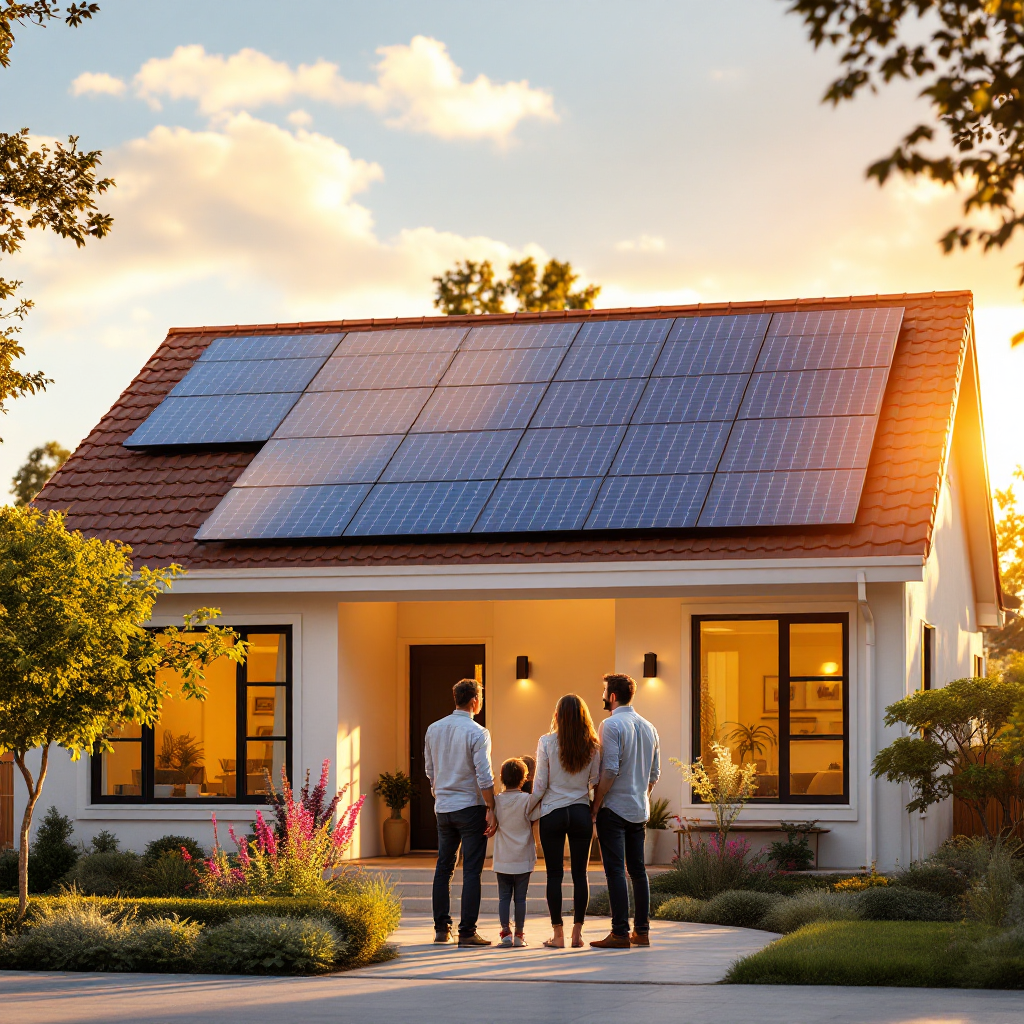Do you think you’d like to convert to solar energy? With more than 40 million American homes now powered by harnessing solar power, the option is becoming more and more appealing for homeowners seeking to gain more control over their energy future. This in-depth guide will tell you everything you need to know about solar power and how it can be a good fit for your home
What Is Solar Power and How Does It Work?
Solar energy generates electricity from the sun in a straightforward yet revolutionary way. At their most fundamental level, solar panels produce useable electricity for your home by converting sunshine into electricity. Those panels are collections of many solar cells, usually made from silicon, that capture sunlight and convert it to electric current.
Think of solar panels as collectors of the sunlight — when the sun hits them, they make loose electrons from their atoms, generating a flow of electricity, which can power your home appliances, lights and the electrical appliances in the home.
The Growing Solar Movement in America
The US solar industry is booming. Recent data indicates that solar power installation soared 21% in 2024 over the previous year. This growth isn’t a blip — it’s a revolution in how Americans power their homes.
Costs and Savings: What to Expect
One of the questions homeowners often have is about costs. Here’s what you need to know:
- A typical home solar system runs about $30,000 before incentives
- Soft costs for installation are between $2.74 to $3.30 per watt
- An average 11 kilowatts system would run roughly $20,552 after federal tax credits
The good news? The federal government directly provides for 30% of the cost of a solar installation, through 2032, meaning solar has never been cheaper. (Many states also provide added incentives and rebates which can lower costs further.
Benefits of Going Solar
Lower Energy Bills
Be Your Own Electricity Provider Through producing your own power source, you can dramatically reduce what you pay in monthly energy bills. How much can the average American homeowner save over the life of the solar system?
Energy Independence
When you sign up for solar panels, you’re putting yourself one giant step closer to energy independence. This means:
- A little bit off the power grid
- Guarding against an increase in energy prices
- Fixed and predictable energy bills Don’t worry about rates changing.
- More secure energy for your household
Environmental Impact
Solar is clean energy that contributes to lowering greenhouse gas emissions. When you go solar, you help make the world a cleaner, more sustainable place to live in while reducing your own monthly energy bill — but despite the freedom that solar power provides, you still rely on a service company for your power.
Common Questions and Concerns Harnessing Solar Power
Solar is something that many homeowners have questions about. Here are some of the highlights:
Can I Get Solar for My Home?
A NUMBER of factors affect the performance of solar panels:
- Which way the roof faces, and Any wear and tear to the roof
- Amount of shade on your roof
- Local weather patterns
- Your current energy usage
What About Maintenance?
Believe it or not, solar panels are very low maintenance. They’re designed to last, and usually just need the occasional cleanup — as well as the regular checking to make sure they’re working as efficiently as possible.
Do Solar Panels Function in Overcast?
Solar panels excel in firing on sunshine, but they continue to produce electricity when it’s cloudy, if somewhat slower. Today’s solar systems are built to harvest power in poor conditions.

Getting Started with Solar
If solar power is of interest to you, these are the initial steps.
- Here’s a breakdown of what you should know so you use only what you need. Review energy bill in order to determine what you use
- Have an expert evaluate your house’s solar potential
- Do your homework on local solar installers and get more than one quote
- Discovert incentives in your area
- Explore financing that fits your situation best
The Future of Solar
The future of solar power is looking good. The possibility of solar delivering as much as 40% of U.S. electricity by 2035 isn’t lost on experts. Solar energy continues to get more and more affordable for consumers and more and more technologically advanced as years go by.
Keep in mind that going solar is more than just an energy decision – it’s an investment in your home’s future and America’s energy independence.” With up to date incentives and ever improving technology, there has never been a better time to think about solar panels for your home.



